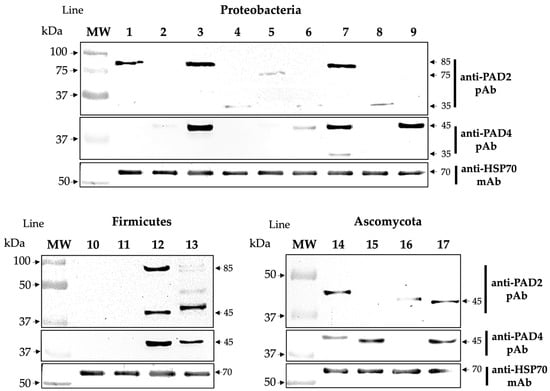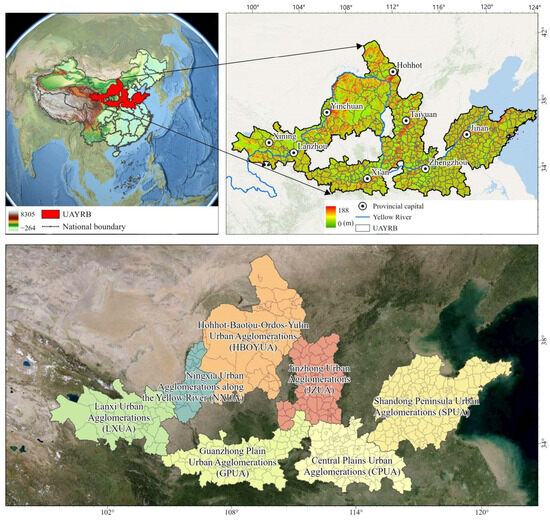Semi-hydrogenation of acetylene to ethylene over metal oxide-supported Au nanoparticles is an interesting topic. Here, a hydrotalcite-based MMgAlO
x (M=Cu, Ni, and Co) composite oxide was exploited by introducing different Cu, Ni, and Co dopants with unique properties, and then used as support
[...] Read more.
Semi-hydrogenation of acetylene to ethylene over metal oxide-supported Au nanoparticles is an interesting topic. Here, a hydrotalcite-based MMgAlO
x (M=Cu, Ni, and Co) composite oxide was exploited by introducing different Cu, Ni, and Co dopants with unique properties, and then used as support to obtain Au/MMgAlO
x catalysts via a modified deposition–precipitation method. XRD, BET, ICP-OES, TEM, Raman, XPS, and TPD were employed to investigate their physic-chemical properties and catalytic performances for the semi-hydrogenation of acetylene to ethylene. Generally, the catalytic activity of the Cu-modified Au/CuMgAlO
x catalyst was higher than that of the other modified catalysts. The TOR for Au/CuMgAlO
x was 0.0598 h
−1, which was 30 times higher than that of Au/MgAl
2O
4. The SEM and XRD results showed no significant difference in structure or morphology after introducing the dopants. These dopants had an unfavorable effect on the Au particle size, as confirmed by the TEM studies. Accordingly, the effects on catalytic performance of the M dopant of the obtained Au/MMgAlO
x catalyst were improved. Results of Raman, NH
3-TPD, and CO
2-TPD confirmed that the Au/CuMgAlO
x catalyst had more basic sites, which is beneficial for less coking on the catalyst surface after the reaction. XPS analysis showed that gold nanoparticles exhibited a partially oxidized state at the edges and surfaces of CuMgAlO
x. Besides an increased proportion of basic sites on Au/CuMgAlO
x catalysts, the charge transfer from nanogold to the Cu-doped matrix support probably played a positive role in the selective hydrogenation of acetylene. The stability and deactivation of Au/CuMgAlO
x catalysts were also discussed and a possible reaction mechanism was proposed.
Full article
 IJMS
IMPACT
IJMS
IMPACT Applied Sciences
IMPACT
Applied Sciences
IMPACT Sustainability
IMPACT
Sustainability
IMPACT Sensors
IMPACT
Sensors
IMPACT JCM
IMPACT
JCM
IMPACT Materials
IMPACT
Materials
IMPACT Molecules
IMPACT
Molecules
IMPACT Energies
IMPACT
Energies
IMPACT Electronics
IMPACT
Electronics
IMPACT Remote Sensing
IMPACT
Remote Sensing
IMPACT Cancers
IMPACT
Cancers
IMPACT Nutrients
IMPACT
Nutrients
IMPACT Mathematics
IMPACT
Mathematics
IMPACT Foods
IMPACT
Foods
IMPACT Buildings
IMPACT
Buildings
IMPACT Polymers
IMPACT
Polymers
IMPACT Animals
IMPACT
Animals
IMPACT Water
IMPACT
Water
IMPACT Plants
IMPACT
Plants
IMPACT Agronomy
IMPACT
Agronomy
IMPACT Biomedicines
IMPACT
Biomedicines
IMPACT Processes
IMPACT
Processes
IMPACT Microorganisms
IMPACT
Microorganisms
IMPACT Diagnostics
IMPACT
Diagnostics
IMPACT Nanomaterials
IMPACT
Nanomaterials
IMPACT Viruses
IMPACT
Viruses
IMPACT Medicina
IMPACT
Medicina
IMPACT Healthcare
IMPACT
Healthcare
IMPACT Cells
IMPACT
Cells
IMPACT Forests
IMPACT
Forests
IMPACT Agriculture
IMPACT
Agriculture
IMPACT Land
IMPACT
Land
IMPACT JMSE
IMPACT
JMSE
IMPACT IJERPH
IJERPH
 Symmetry
IMPACT
Symmetry
IMPACT Genes
IMPACT
Genes
IMPACT Pharmaceutics
IMPACT
Pharmaceutics
IMPACT Coatings
IMPACT
Coatings
IMPACT Micromachines
IMPACT
Micromachines
IMPACT Pharmaceuticals
IMPACT
Pharmaceuticals
IMPACT Atmosphere
IMPACT
Atmosphere
IMPACT Children
IMPACT
Children
IMPACT Religions
IMPACT
Religions
IMPACT Antioxidants
IMPACT
Antioxidants
IMPACT Life
IMPACT
Life
IMPACT Metals
IMPACT
Metals
IMPACT Biomolecules
IMPACT
Biomolecules
IMPACT Vaccines
IMPACT
Vaccines
IMPACT Education Sciences
IMPACT
Education Sciences
IMPACT Minerals
IMPACT
Minerals
IMPACT Horticulturae
IMPACT
Horticulturae
IMPACT Brain Sciences
IMPACT
Brain Sciences
IMPACT JPM
IMPACT
JPM
IMPACT Bioengineering
IMPACT
Bioengineering
IMPACT


























